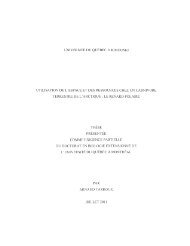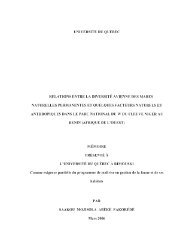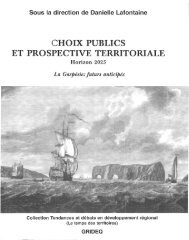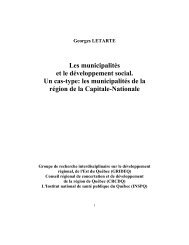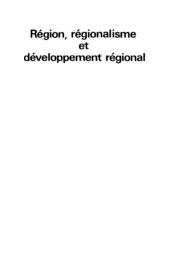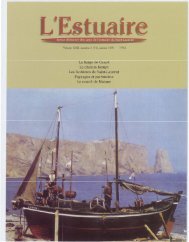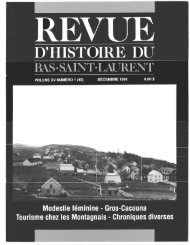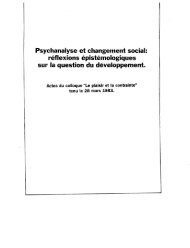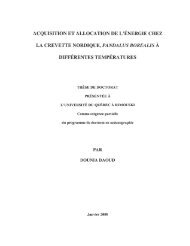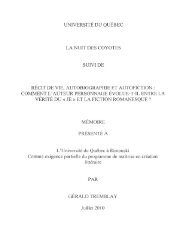influence du climat et de la prédation sur l'utilisation de l'habitat et la ...
influence du climat et de la prédation sur l'utilisation de l'habitat et la ...
influence du climat et de la prédation sur l'utilisation de l'habitat et la ...
Create successful ePaper yourself
Turn your PDF publications into a flip-book with our unique Google optimized e-Paper software.
55<br />
4.1. A bstract<br />
Because the <strong>climat</strong>e is changing, there are now additional incentives to un<strong>de</strong>rstand the<br />
strategies that organisms use to cope with thennal h<strong>et</strong>erogeneity. The thermal environment<br />
experi enced by an animal is d<strong>et</strong>ermined by conditions of air temperature, wind, and radi ation,<br />
and habitat can also medi ate the thermal environment. We mapped micro<strong>climat</strong>es by<br />
estimating energy expenditure in mi crohabitats avai<strong>la</strong>ble to North American porcupines<br />
(Er<strong>et</strong>hizon dorsatum) in the cold Canadi an winter. We th en examined acti vity patterns and<br />
microhabitat use of free-Iiving indivi<strong>du</strong>als to d<strong>et</strong>ermine wh<strong>et</strong>her porcupines respon<strong>de</strong>d<br />
behaviourally to thennal constraints. The lower critical temperature (Tic) of winter<br />
ac<strong>climat</strong>i zed porcupines in southern Québec lies around -2°C and indivi<strong>du</strong>als are exposed,<br />
<strong>du</strong> ring winter, to operative temperatures (Tc) th at are weil below Tic' According to our<br />
thennal map, porcupines re<strong>du</strong>ced m<strong>et</strong>abolic rate by about 25% when moving from a tree to<br />
their <strong>de</strong>n in cold conditions (Tc



